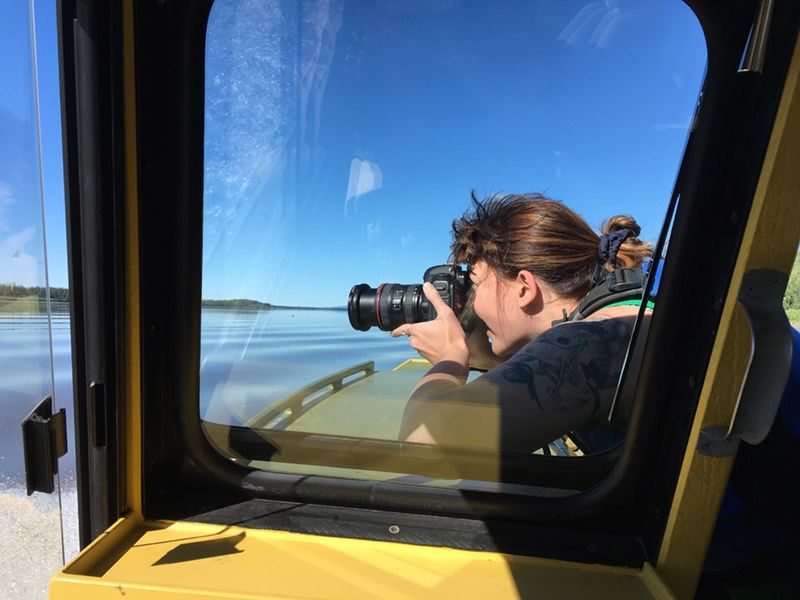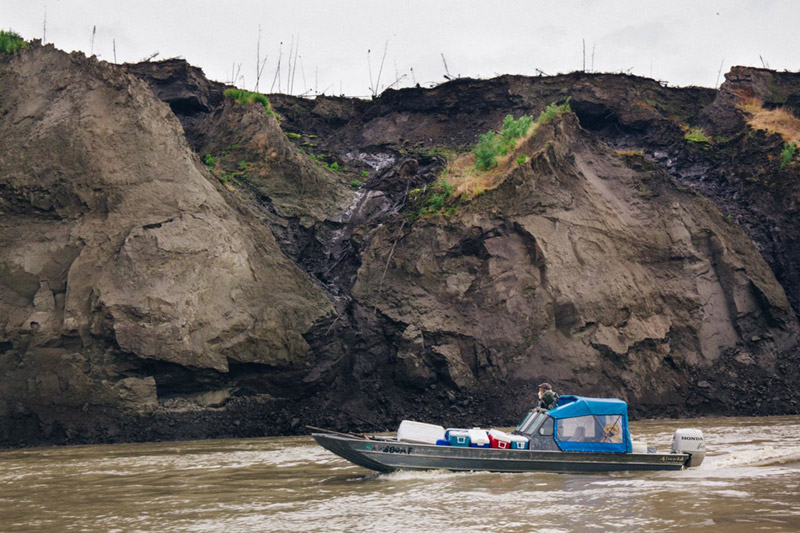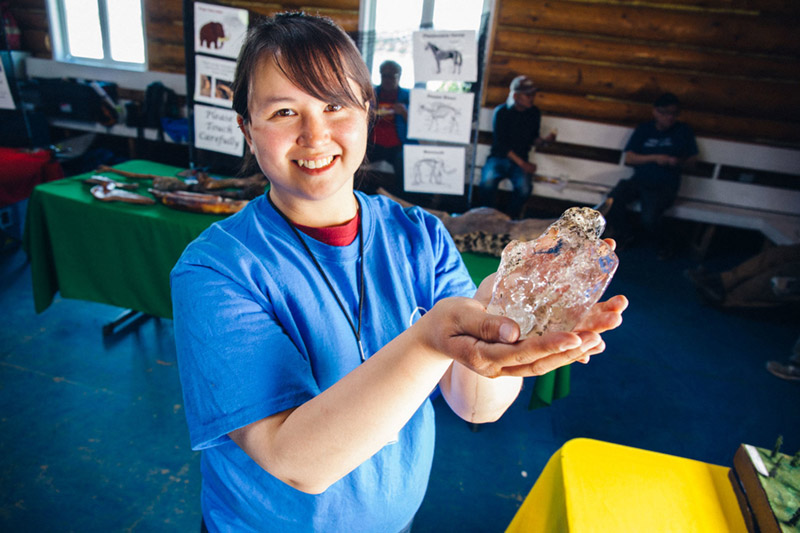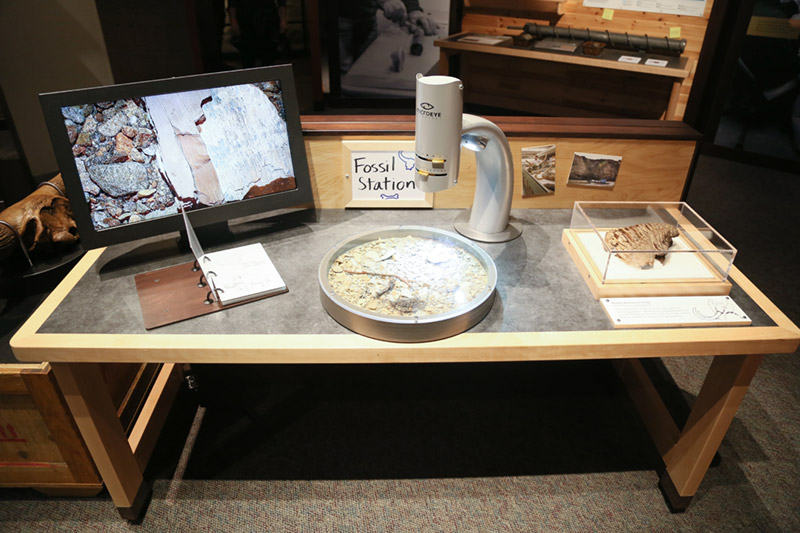Making Permafrost Real & Relevant
By Amy Nelson
Few people have the opportunity to enter the Permafrost Tunnel Research Facility, but thanks to a new exhibit at the Oregon Museum of Science and Industry (OMSI), anyone can get a sense of what it is like to journey underground, back to the Pleistocene. The exhibit, Under the Arctic: Digging Into Permafrost, features a 30-foot long, walk-through replica of the tunnel, as well as fossil research stations, interactive games, and videos.

Described by OMSI as an “immersive environment,” the exhibit invites visitors to step into the shoes of a climate science researcher. So immersive is this experience, it even incorporates the smell of permafrost.
“It smells kind of like a barnyard,” said OMSI exhibit designer Allyson Woodard, “but a little more musty.”
For Woodard, the stinky smell is much more than a fun detail.

“That odor comes from decomposing organic matter, so you are smelling heat-trapping gases being released into the atmosphere,” she said. “That is a reason why all of us should be concerned about thawing permafrost.”
Indeed, given that permafrost is estimated to contain nearly twice as much carbon as is currently in the atmosphere, the release of that carbon (in the form of carbon dioxide and methane) from thawing permafrost is not a thing at which to turn up one’s nose.

The 2,000 square-foot exhibit, which will travel to other venues over the next eight years, was the result of a collaboration between OMSI and the University of Alaska’s (UAF) Geophysical Institute. In 2014, UAF received a grant from the National Science Foundation to use the Permafrost Tunnel Research Facility to teach people about permafrost and its role in the global climate. While tunnel signage improvements and outreach programs for communities within the permafrost region were important, UAF also recognized the need to bring this topic to the attention of a broader audience. That is when they reached out to OMSI.

“For a lot of visitors, this is a completely new topic,” said Sue Wu, Earth Sciences Coordinator for OMSI. Based on visitor reactions, the topic is resonating. Since the exhibit’s opening in October, Wu has already heard one anecdote from a staff educator about a visitor who, after exploring “Under the Arctic,” is now considering a career in permafrost research.
While details like a giant mammoth tusk protruding from the tunnel wall help the experience feel real, interactive games help illustrate the consequences of thawing permafrost and get visitors thinking about solutions.
One of the more popular games challenges players to keep fossil fuels in the ground by pounding them with their hands in the style of ‘whack-a-mole.’ According to Wu, players quickly realize that the fossil fuels pop up faster than they can pound by themselves, and they often recruit others to join.
“One of the messages that activity conveys,” said Wu, “is that you cannot solve this problem by yourself; it takes a lot of other people.”

Recognizing the importance of indigenous knowledge to the growing body of permafrost research, the exhibit’s creators aimed to highlight traditional knowledge side-by-side with western research. An Alaska Native advisory team helped guide the content of the exhibit, which took two years to create.
“Alaska Natives were the first to start noticing the effects of climate change impacts,” said Woodard. “When you are relying on subsistence diet, as these communities do–not only for nutrition but for maintaining culture and tradition–minute changes in patterns of nature become apparent very early.”
One tool the exhibit employs to highlight traditional knowledge and convey the human aspect of thawing permafrost is video. The exhibit includes videos that feature personal stories of researchers and people who live in communities where thawing permafrost is part of daily life.

Though these videos are not available online, some of the footage featured within them is. Raising Educational Achievement through Cultural Heritage UP (REACH Up), an organization dedicated to providing Native students and teachers with culturally relevant science curriculum, has an impressive library of educational videos, including this one featuring Alaska Natives living in communities directly affected by permafrost thaw.
I hope it shows people that climate change is neither in the future nor irrelevant…It is happening now.
For those who walk through, interact with, touch, watch, and yes, even smell, the compelling features of this immersive exhibit, the abstract subject of thawing permafrost will likely become very real.
“I hope it shows people that climate change is neither in the future nor irrelevant,” said Woodard. “It is happening now.”

Along with this sense of urgency, Woodard hopes visitors come away with an understanding of how the permafrost landscape provides clues to our past, present, and future, and of realistic ways they can positively impact the environment.
Under the Arctic: Digging Into Permafrost will remain at OMSI through the summer of 2018, at which point it will begin traveling to other institutions. For more information, visit the OMSI web site.
